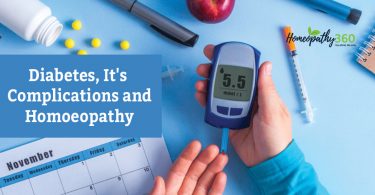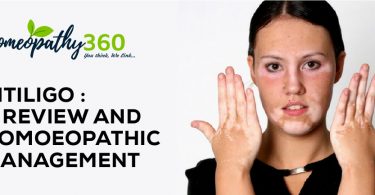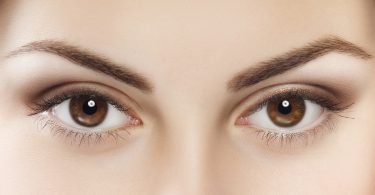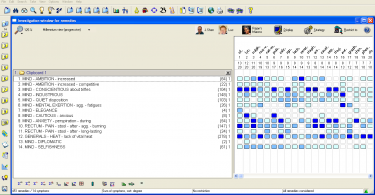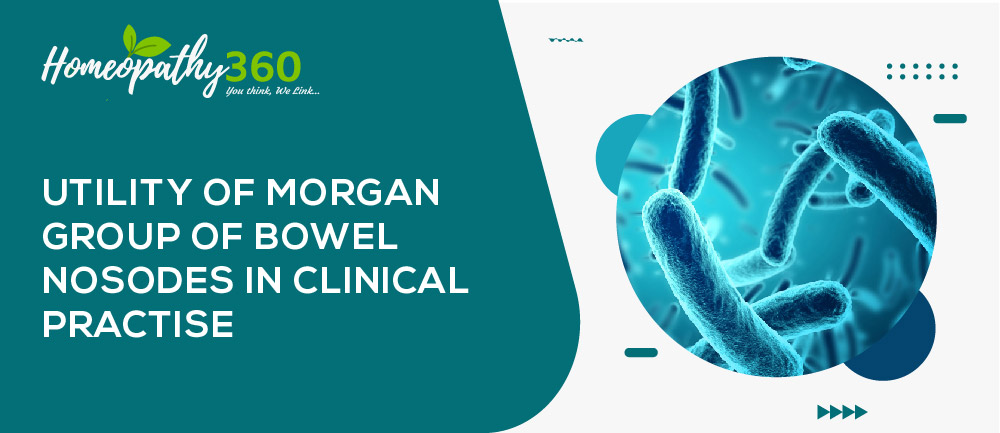
ABSTRACT
Bowel nosodes are the homoeopathic remedies which are prepared from bacterial flora of human intestine. Bacillus Morgan is the most widely used bowel nosode. Dr Bach introduced it on the basis of laboratory technique. On the basis of laboratory and clinical indication, Dr Paterson divided this wide group into two: Morgan Pure and Morgan Gaertner. Morgan group has selective action on mucous membrane of the whole alimentary canal , genito-urinary, and respiratory tract, but there is a difference in the degree of action of the sub-types. B. Morgan-Gaertner is associated with acute inflammation of the gall-bladder and acute cholecystitis, while B. Morgan Pure usually associated with the chronic phase of gallstones. Morgan Gaertner has marked action on the genito-urinary tract especially on kidney with the formation of renal calculus. B. Morgan Pure has outstanding action upon the skin. However, the use of this group in clinical practice is neglected due to lack of reproving and knowledge. But when researches are made on this group, they may prove beneficial as intercurrent remedies like any other nosodes.
Keyword: Lycopodium clavatum, Morgan Gaertner, Morgan Pure, non-lactose fermenting bacteria, Sulphur.
INTRODUCTION
Bowel nosodes are a series of homoeopathic remedies which are made from cultures of non lactose fermenting bacterial flora of human intestine and developed in a distinct class of vaccines for the treatment of chronic diseases1.
In human body around 500 bacterial flora found in gastrointestinal tract, which are useful in maintaining health2. Any change in normal balance in bowel flora lead to important part in disease pathogenesis. There are many references in which it is confirmed that there is significant difference in bowel flora in patients who are suffering from diseases like colon cancer, rheumatoid arthritis, ankylosing spondylitis, etc2. Dr Edward Bach, who was the bacteriologist from London, started to investigate the role of intestinal bacteria in the pathogenesis of chronic diseases. He found that the certain intestinal germs belonging to non-lactose fermenting, gram negative coli, typhoid group have close connection with chronic disease and its cure. He isolated the bacilli and gave it to the patient in the form of vaccine (prepared from culture of killed organism), an autogenous vaccine, and asserted to cure the disease. Later, he potentised the vaccine according to the homoeopathic principles and named them bowel nosodes.The medicines are not prepared from morbid product of disease, but still classified under nosodes. The proving of bowel nosodes were not conducted in the strict Hahnemannian manner, but on clinical observation of the sick person3, 4.
Later, Dr John Paterson and his wife Elizabeth Patterson focused on this researchand found out the characteristics of the bowel flora, in health, disease and during drug proving’s. Dr J Paterson observed more than 20,000 stool specimens and came to the conclusions that “the non lactose fermenting non pathogenic bowel flora (B.coli) undergoes the definite changes in the disease condition”. He related bowel nosode to a group of homoeopathic remedies andalso advocated specific recommendation on potency, dose, and repetition of bowel nosodes5.
REVIEW OF LITERATURE
Preparation of bowel nosodes1
Bowel nosodes are prepared from the culture of non-lactose fermenting, gram negative bacteria of intestine and potentised according to homoeopathic principles.
Administration of bowel nosodes and its curative process in body1
Bowel nosodes are deep acting remedies and given in the same manner as any other homoeopathic remedies selected, i.e. on the basis of homoeopathic principles. After the administration of the suitable bowel nosode, the cure starts with alteration of other group of bacilli by non lactose fermenting bacteria and ultimately make them disappear. This happens with the disappearance of the symptoms, reappearance of the old symptoms, and the appearance of the skin eruptions with ultimate clearing and increasing the vitality of the patient.
Potency, dose and repetition of bowel nosodes1
According to Paterson, high potency should be used when mental generals are more prominent and low potency when pathological symptoms are marked. He also advised not to repeat the bowel nosode within 3 months.
Important bowel nosodes used in homoeopathy are:
- Bacillus Morgan (Bach): two sub-types of Morgan Pure (Paterson) and Morgan Gaertner (Paterson).
- B. Proteus (Bach)
- Mutabile (Bach)
- Bacillus No. 7 (Paterson)
- Gaertner (Bach)
- Dysentery Co. (Bach)
- Sycotic Co. (Paterson)
- Faecalis
- Bacillus No. 10 (Paterson)
- Cocal Co. (Paterson)
B. Morgan is the most widely used bowel nosode. John Paterson found most of his positive results from this group.
B. Morgan (Bach):
B. Morgan is
the type of non lactose organism most frequently found in the stool. Dr Bach
incubated the stool specimen with sugar and observed the fermentation reaction of
bacteria after eighteen hour and named this Bacillus
Morgan. He did not consider what would happen next if continued for long
period6.
Later on, Dr Paterson having divided the Morgan group of bacteria into 2 sub classes – Morgan Pure and Morgan Gaertner on the basis bacteriological experimentation. He incubated the specimen for maximum period upto full seventy-two hours and observed the fermentation reactions of the same bacteria, the changes noted after the initial eighteen-hour period, named Bacillus Morgan Gaertner and reaction observed after full seventy two hours distinguished as Bacillus Morgan Pure.
Miasmatic concept: According to Dr Bach, nosodes prepared from non lactose fermenting bacteria are closely associated with Psora miasm. Main miasmatic influences running through the Morgan Bach nosode is psora and sycosis6.
Indications of Bacillus Morgan nosode6, 7, 8, 9, 10
Morgan group can be represented by the word “congestion”. It is commonly indicated for congestive headache with congested or flushed face, congestion of liver with bilious attack, congestive dysmenorrhoea, congestion nasal and bronchial membrane (broncho-pneumonia) etc7, 8.
Clinically, it is useful for migraine, pneumonia, emphysema, spondylosis, infantile eczema, conjuctivitis, keratitis, blepharitis, mastoiditis, otitis media, nasal polyps, sinusitis, rhinitis, stomatitis, aphthous ulcer, tonsillitis, pharyngitis, thyroiditis, irritable bowel syndrome, haemorrhoids, anal fissure, worm infestation, diarrhoeal diseases, etc.7,8,910
Mental generals– Introspective, anxious, self centred, hypochondriac and apprehensive. Fear of crowds and company, with a dislike of being left alone. Mental depression often with suicidal tendency, Sulphur has also this suicidal tendency to leap from a high window (showing the syphilitic miasm) 6, 8.
Head- Congestive headache, with flushed face, skin feels hot, but patient may have a sense of chilliness (Sanguinaria canadensis).Headache worse from hot atmosphere, thundery weather (showing sycotic miasm) , excitement, travelling in bus or train and better from eating (similar like Lycopodium clavatum). Vertigo from high blood pressure6, 7, 8.
Eye– Non-purulent conjunctivitis. Keratitis, iritis and blepharitis6.
Ear– Meniere’s disease, mastoiditis, otitis media6.
Digestive system-Bacillus Morgan has a selective action on the liver and digestive organs and there are many symptoms, the commonest being dirty tongue ,never clean, bitter taste in the morning with accumulation of thick catarrhal mucus which may be vomited during the night or in the early morning after rising. Constipation is the rule in all Morgan cases, and haemorrhoids and pruritus ani common and troublesome symptoms6,7,8.
Desire and aversion– Desire for butter and other fats, sweets and eggs, even though fats and eggs may aggravate bowel conditions6.
Respiratory system- Congestion of nasal and bronchial membrane, especially in children, broncho- and lobar pneumonia. Inflammatory and congestive processes in respiratory system may result emphysema6.
Circulation- Morgan group represents the congestive tendency such as erythro-cyanosis of lower limbs (mainly in females) or general tendency to varicose veins in both sexes. The facial appearance isfull-blooded type, pale-face is very unusual in Morgan patient7.
Genito-urinary system- Congestive dysmenorrhœa. Flushing during menopause. Leucorrhoea may be either yellow to green or a definite brown, with a tendency to be corrosive. The urinary system shows cystitis and frequent urination. During attacks, the urine is strong- smelling and corrosive and giving burning pain on micturition. Enuresis is also a feature of this medicine6,7,8.
Skin-Eczema of the infant at the teething stage or later life. Dr William B. Griggs, used this remedy successfully in eczema of young children9.Paterson also recommended Morgan Bach for the malignant states in the elderly6.
Associated skin remedies are Sulphur, Graphites, Petroleum and Psorinum8.
Musculoskeletal system– Rheumatic and arthritic symptoms involving particularly the shoulders, arms, wrists, hands and knees. Pain may be experienced in the soles of the feet. Joints are swollen and painful, especially at night. General loss of power and stiffness in the limbs accompanied by sensory nerve involvement giving tingling and numbness in the extremities. The grip of the hands is weakened and the sense of touch is reduced6.
Modality6–
Aggravation – at night, by heat.
Amelioration – by movement
Related remedies-
Dr Kent relates Morgan group with trios of Sulphur, Calcarea carbonicum and Lycopodium clavatum8.
Comparison between Morgan Pure and Morgan Gaertner in clinical conditions6,7 ,9, 10
| SYSTEM | MORGAN PURE | MORGAN GAERTNER |
| Main Aetiology | Consumption of Morganella infected food /chronically poor diet. Infection, alcohol, weaning | Sedentary habit , poor diet, drugs, food-borne bacterial toxins, stress |
| Mind | Psychotic depression Bipolar depression Suicidal tendency | Manic depression Anxiety neurosis |
| Head | Bilious-headache Hypertension | Alopecia areata |
| Vertigo | Vertigo with hypertension | – |
| Eye | Conjunctivitis | Blepharitis |
| Ear | Catarrhal otitis media | Otitis media |
| Face | Acne rosaceae | – |
| Nose | – | Polyps, nasal catarrh, maxillary sinusitis |
| Throat | Pharyngitis | Tonsillitis |
| Abdomen | Cholelithiasis, fatty liver, bilious headache and gallstones | Chronic cholecystitis, peptic ulcer, gastritis, Gastroesophageal disease |
| Urinary | Diabetes mellitus, Urethral caruncle | Nocturnal enuresis, Renal calculi |
| Female | Fibroid uterus | Vulvovaginitis |
| Chest | Asthma in infants and children, emphysema, pneumonia | Asthma in general, panniculitis, bronchopneumonia |
| CVS | Angina pectoris | |
| Extremities | Arthritis in small joints, erythrocyanosis foot, varicose veins and varicose ulcer | Rheumatism: wrist |
| Back | Rigidity and spondylosis in general | Rigidity in cervical region |
| Skin | Corns, callosities Chilblains Eczema Flat warts | Herpes Urticaria Psoriasis Jagged warts |
| Sleep | Disturbed in general | Night terror |
| Perspiration | Offensive foot sweat | Profuse sweat in feet |
| Modalities- Aggravation | Motion when beginning of, thunder, warmth in general, winter. | Eating after, warmth bed of, 4-8 pm |
| Modalities- Amelioration | Eating, washing in general, vomiting – bilious | Eructation , flatus passing |
| Related Remedies | SULPHUR, Alumina, Baryta carbonicum, Calcarea carbonicum, Calcarea sulphuricum, Carbo vegetabilis, Corboneum sulphuricum, Digitalis purpurea, Medorrhinum, Psorinum, Graphites, Kalium carbonicum, Magnesia carbonicum, Natrum carbonicum, Petroleum, Sepia officinalis. | LYCOPODIUM CLAVATUM, Chelidonium majus, Chenopodium anthelminticum, Helleborous niger, Hepar sulphuricum, Lachesis mutus, Mercurius sulphuricum, Sanguinaria canadensis, Taraxacum. |
CONCLUSION:
Morgan Bach is a largely used nosode, Paterson and many other physician used it successfully in many clinical conditions like infantile eczema, gallstone, renal stone, migraine, pneumonia, etc. Morgan Bach mainly acts on the vegetative system of the body, i.e. mucous membrane of the whole alimentary canal from the mouth to the anus, genito-urinary, and respiratory tract. Internally it acts on the mucous membranes; externally it acts on the skin. Its sub-types: Morgan Pure (Paterson) has marked action on skin and liver while Morgan Gaertner (Paterson) has marked action on the genito-urinary tract.
Unfortunately, with the passage of time, this group of drugs have been gradually sidelined by the profession due to lack of knowledge and lack of reproving. Further research is required in this field and so like any other nosodes, the bowel nosodes can be used as intercurrent remedies for clearing the case or curing the patient.
REFERENCES:
- Kumar SP, A useful article about Bowel Nosodes
https://hpathy.com/materia-medica/bowel-nosodes/ cited on dated 28-2-2019
- Nayak C. Study on effectiveness of homoeopathic bowel nosodes in the treatment of cervical spondylosis on the basis of stool culture report. Indian J Res Homoeopathy 2008; 2:42-8
- De Ai-ling Makewell. Bowel nosodes: A group of neglected remedies. International homoeopathic internet journal
http://www.interhomeopathy.org/fr-bowel-nosodes-a-group-of-neglected-remedies
- Cummings S. History and development of the bowel nosodes. British Homeopathic Journal. 1988 Apr;77(02):72-7.
- Paterson J. The role of the bowel flora in chronic disease. British Homeopathic Journal. 1949 Jan;39(01):3-26.
- Saxton J. Bowel Nosodes in Homeopathic Practice. Publication 2012. 2nd edition. Page 202.
https://www.narayana-verlag.com/homeopathy/pdf/Bowel-Nosodes-in-Homeopathic-Practice-John-Saxton.14533_1Contents.pdf .
- Paterson J. Morgan-gaertner, the bowel nosode complimentary to Lycopodium. British Homeopathic Journal. 1949 Jan; 39(01):91-4.
- Allen HC. Allen keynotes, Rearranged and classified with leading remedies of the material medica and bowel nosodes. B. Jain publisher. 10th edition. Reprint edition 2006.Pg 416-418.
- Malcolm R. Materia medica of the Bowel Nosodes Part 3.Systems & Symbiosis – The Bowel Nosodes Reappraised .A Seminar in Integrative Medicine. January 2010.
https://docplayer.net/85567072-Core-text-part-2-systems-symbiosis-the-bowel-nosodes-reappraised-b-owel-nosodes-intestinal-micro-ecology-course-text-study-resources.html
- Squire B. The Repertory of homoeopathic Nosodes and Sarcodes. B. Jain Publisher (P) Ltd. Revised edition2003.
About Author:
Sandhya Kashyap1, Irene B. Thomas 1, Prof (Dr) Neeraj Gupta 2
- PG Student, MD (Hom) Part 1- Organon of Medicine, NHMC and Hospital, Delhi.
- Professor & PG Guide, Department of Organon of medicine and Homoeopathic Philosophy, Nehru Homoeopathic Medical College and Hospital, New Delhi


